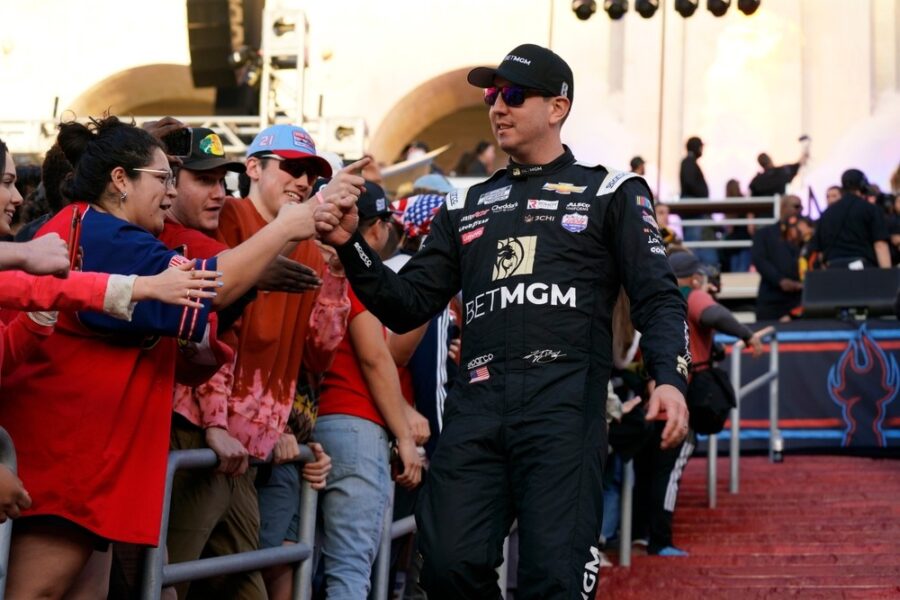BetMGM raises revenue and cash flow projections

Ahead of its third-quarter-earnings call, BetMGM elevated its projections for all of 2025. The company, jointly owned by Entain and MGM Resorts International, now looks for full-year revenue approaching US$2.8 billion and cash flow on the order of US$200 million.
BetMGM also announced that it would make a dividend payment to its corporate parents of US$200 million by year’s end. The company cited “strong year-to-date momentum continuing across both online sports and igaming.”
Quarterly benchmarks were US$667 million in net revenue, a 36% increase, and a swing from negative return on investment of US$57 million in 2024’s third quarter to positive ROI of US$41 million. Igaming net revenue rose 21% and sports betting winnings were up 36%.
Igaming revenue was US$454 million, up from a year-prior US$376 million. Online sports betting win was US$212 million.
In online sports betting, BetMGM saw handle of more than US$3.1 billion, up from US$2.8 billion in 2024’s third quarter and a 13% uptick. The hold percentage was 10.1%.
Retail sports wagering experienced a steep decline, from US$20 million in win in 2024 to US$11 million in the third quarter, down 47%.
BetMGM recorded 902,000 monthly active users, a 6% increase from 854,000 a year earlier. The company said this was “in line with expectations, reflecting our refined player targeting and management capabilities.”
Chief Executive Adam Greenblatt, in a prepared statement, said the company’s success was “underpinned by the ongoing execution of our strategic plan. The execution in operations we have described this year — improved marketing efficiency, player management, brand positioning, and product and platform improvements — all contributed to our strong revenue growth and material cash-flow increase from both sides of the business. Strong underlying metrics and margin outperformance during July and August support our confidence in raising guidance for full year 2025.”
Greenblatt continued, “we have reached yet another inflection point in our journey, returning operating cash flow back to Entain and MGM Resorts. My previous statements that BetMGM is healthier than it has ever been still ring loudly, and our stronger than expected performance through Q3 positions us well for the rest of the year and into 2026.”
David McKee is an award-winning journalist who has three decades of experience covering the gaming industry.
Verticals:
Sectors:
Topics:
Dig Deeper
The Backstory
Why Illinois turned to a per-bet levy
Illinois lawmakers added a new per-wager tax minutes before midnight as they raced to finalize the fiscal 2026 spending plan, layering a US$0.25 fee on each of the first 20 million bets placed with licensed sportsbooks and US$0.50 thereafter. The surcharge was tucked into a US$55.2 billion budget that seeks roughly US$1 billion in new revenue for public transit and other priorities, following last year’s increase of the state’s online sports betting tax rate to 40% from 15%. The late-hour move, detailed in our earlier report on how Illinois raises sports betting tax as part of the 2026 budget, signals the state’s willingness to test where the market’s pain threshold lies after years of rapid gaming expansion.
Budget writers have leaned on recurring revenue to underwrite core services and transit, an approach underscored in the state’s Fiscal Year 2026 Operating Budget. The per-bet structure, unlike gross gaming revenue taxes that rise and fall with operator win rates, is designed to collect steady income regardless of outcomes or promotional spending. That certainty for the state, however, amplifies uncertainty for operators already navigating thin margins, aggressive competition and uneven sports results.
Industry pushback focused on price and migration risk
Operators and their allies tried to head off the measure as it advanced. The Sports Betting Alliance, whose members include FanDuel, DraftKings, BetMGM and Fanatics, condemned the surcharge after passage, warning of higher consumer prices and fewer legal options. The group’s statement framed the levy as discriminatory and pledged to oppose similar proposals elsewhere; it is available here: Sports Betting Alliance statement on Illinois per-bet tax.
Prominent media voices tied to operators amplified those concerns. A now-deleted post from the Ringer argued the policy would “hurt sports fans in Illinois and potentially drive them to the illegal market,” according to prior reporting. Barstool personality Dan “Big Cat” Katz urged viewers to pressure lawmakers to reject the plan; his call-to-action video remains online at X: Dan Katz video on the Illinois tax. The political calculus aside, the core industry argument is straightforward: a flat fee per ticket, layered atop a 40% online tax, pushes operators to widen spreads, curb promotions or limit low-stakes bets—each a friction point that could shift bettors to offshore books. Our coverage outlines that warning in detail in Illinois raises sports betting tax.
A mixed earnings tape shaped the backdrop
The Illinois vote landed as operators delivered diverging financial signals. BetMGM, jointly owned by Entain and MGM Resorts International, lifted guidance ahead of its third-quarter update, citing “strong year-to-date momentum” across sportsbook and igaming. The company now targets nearly US$2.8 billion in 2025 revenue and roughly US$200 million in cash flow, with a US$200 million dividend planned for its parents, according to BetMGM raises revenue and cash flow projections. In the most recent quarter, net revenue rose 36% to US$667 million as online sports win increased 36% and igaming climbed 21%—performance BetMGM attributed to improved marketing efficiency, player management and product upgrades.
Earlier in the year, BetMGM hiked its full-year outlook to US$2.7 billion in revenue and US$150 million in cash flow after a 36% surge in second-quarter net revenue and a jump in cash flow to US$86 million. The operator pointed to 56% growth in sports betting revenue and disciplined customer acquisition as the catalysts, as detailed in BetMGM revenue, cash flow surge. Those results show that scaled operators with efficient spend and strong igaming franchises can improve profitability even in a competitive market. They also set up a contrast with peers wrestling with volatility and shifting expectations.
When the ball bounces the other way
FanDuel parent Flutter Entertainment offered the counterpoint last year, cutting its U.S. 2024 revenue and EBITDA outlook after one of the most bettor-friendly NFL seasons on record. Flutter cited an unusually high rate of favorites winning and a fourth-quarter sportsbook net revenue margin of 6.6%, partially offset by lower promotions, per Flutter lowers 2024 U.S. projections amid disappointing betting trends. The company portrayed the results as transitory but significant, with a US$438 million negative gross gaming revenue impact from mid-November through year-end. The episode underscores how quickly operator margins can compress when outcomes skew toward customers—even before new taxes hit.
A per-bet levy compounds that exposure. Unlike a percentage tax that scales with revenue, a fixed fee eats into unit economics regardless of hold. Thin or negative ticket-level margins become thinner, forcing operators to adjust in ways consumers notice. In high-tax jurisdictions like Illinois, those choices often take the form of higher vigorish, fewer parlay boosts, tighter risk limits or reduced menu depth, especially for low-dollar and long-tail markets. Each adjustment can nudge recreational bettors toward unregulated sites that face no such burden and can market richer odds.
Wall Street’s math gets tougher in high-tax states
Analysts already question whether operators can hit ambitious growth targets without outsized help from luck. Deutsche Bank’s Carlo Santarelli, a long-standing skeptic of DraftKings’ model, warned this spring that focusing on hold alone “is a bit disingenuous,” pressing instead on the interplay of hold, handle growth and igaming contribution. He argued DraftKings’ targets imply steep gains in online sports betting and a difficult-but-plausible 25% lift in igaming, while also flagging that 2025 handle growth across operators sat near 13% through early year, as our story Deutsche Bank analyst skeptical of DraftKings’ projections details.
Santarelli also highlighted how top-line handle growth has been strongest in high-tax New York, where pricing tends to be less consumer-friendly, while mature markets like New Jersey and Michigan underperformed. Illinois, now pairing a 40% online tax with a per-ticket fee, sits squarely in that high-friction cohort. The investment implication: operators may reweight marketing, limit exposure or tolerate share losses rather than chase unprofitable volume. That sets up a slower-growth, higher-takeout environment that could depress casual engagement even as states seek stable tax streams.
What comes next for bettors, books and the state
Illinois’ move will test whether a steady per-bet harvest can coexist with a healthy legal market. Operators must decide how much of the surcharge to pass through via pricing and product changes, and how quickly. Bettors will respond to higher costs by adjusting bet sizes, shifting to parlays or shopping across platforms, including offshore. If the legal market thins, the state’s take could undershoot projections even as unregulated sites fill the gap.
Still, the politics are clear: lawmakers prioritized predictable revenue for transit and services, as outlined in the FY 2026 budget. The industry will keep pressing its case in Springfield and in public, through statements like the Sports Betting Alliance’s opposition and advocacy from media partners, including Katz’s video appeal. Whether those efforts soften the policy or reshape its implementation will determine how much Illinois’ market—and the state’s transit fund—ultimately collect.








